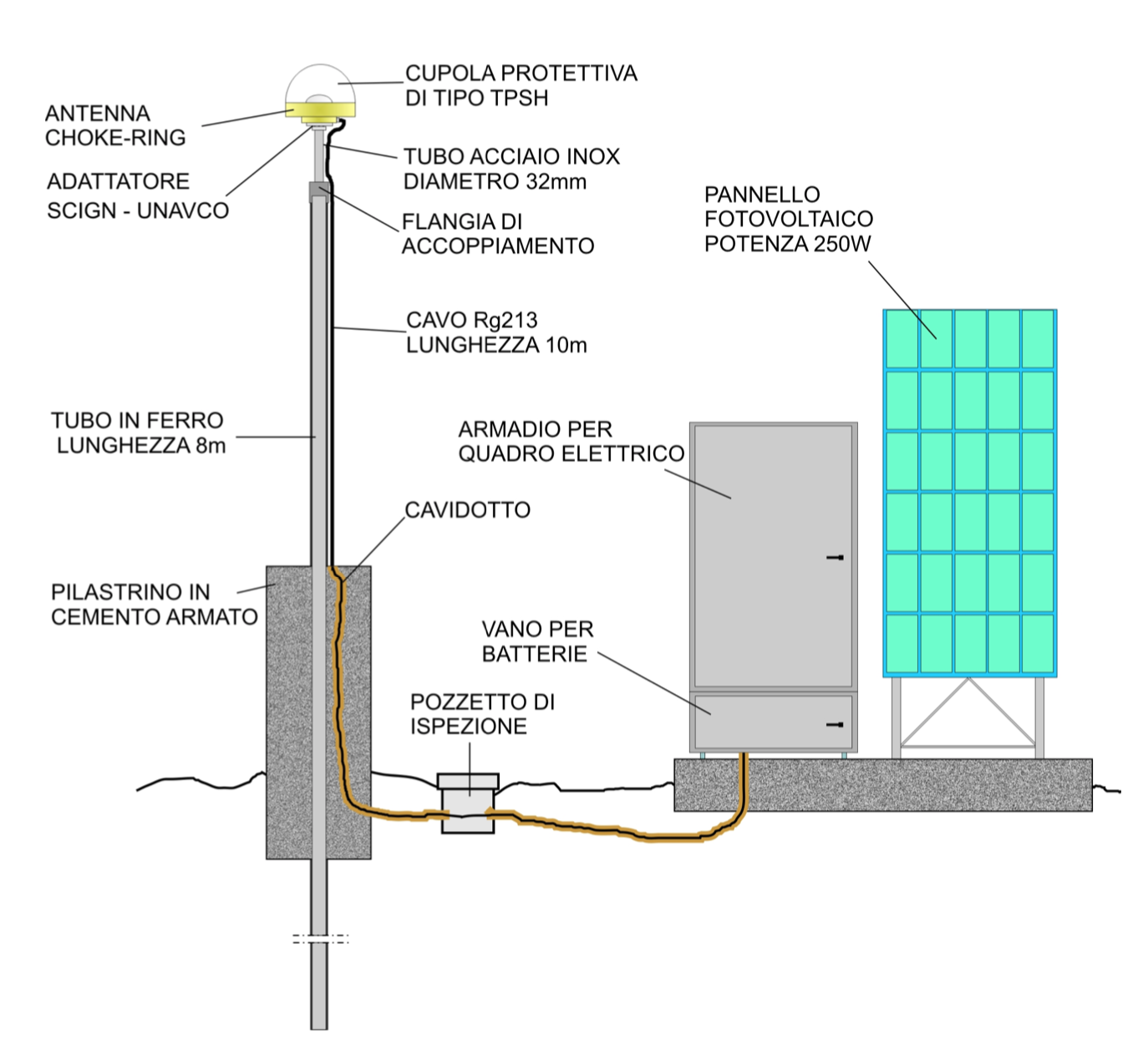GNSS Station OL01
The OL01 station, located near 'Cluster A' of the Cornegliano Laudense plant, houses both the seismic station and the GNSS station. GNSS instrumentation is intended to monitor the ground deformation at the surface and eventually indicate potential anomalous phenomena. The installation of the GNSS station was completed on 27/10/2016. The station can receive signals from the following satellite navigation systems: GPS, GLONASS, GALILEO, QZSS, SBAS and BeiDou.
Figure 1 - Construction scheme of the OL01 GNSS station.
The monumentation of the GNSS OL01 station consists of the following components:
a) An iron pipe with a diameter of approximately 89 mm is cemented in the tube to ground cavity; therefore, the pillar, whose base is approximately 30 cm below the ground, is in continuity with the concrete/iron micropile 6 m below. The iron pipe is coupled with a terminal consisting of a flange and a stainless-steel pipe with a diameter of 32 mm and a total length of approximately 350 mm;
b) The stainless-steel terminal, through the SCIGN Mount adapter (as per GNSS installation directives dictated by the UNAVCO protocol) is coupled the GNSS antenna (Topcon TPSCR. G5 TPSH) that can receive the signals from the various GPS constellations: GLONASS, etc.;
c) The antenna is connected to the Topcon NET-G5 GNSS receiver, which records all the information received from the GNSS antenna;
d)The receiver is housed inside a cabinet where the electrical panel that performs the following functions is located:
• power supply through a voltage regulator (WRM-15 MPPT charge regulator) connected to a 250 Watt photovoltaic panel and two 100 Ah batteries;
• data transmission via a UMTS router (UR5i v2);
• LAN controller 2.0 (Soft. Version 3.11) for monitoring and restoring the GNSS station and the instrumentation contained within the electrical panel.
Inside the electrical panel, there is also an ethernet switch and a timer.
The data collected (RINEX files) are sent through the UMTS router for a subsequent processing phase to the OGS frednet server located at the Seismological Research Centre of Udine.




